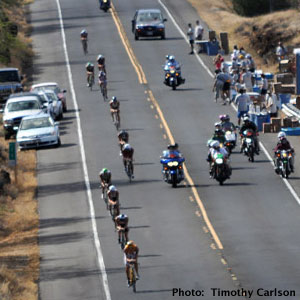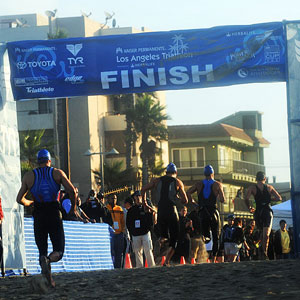Beginners: Week 19

There are fewer than three weeks prior to the race. This gives you time for about a week and a half of relatively hard workouts, and you'll still have enough time to gain fitness. But, it's better to be a little less trained, and a little more rested, then a little too trained, and a little less rested.
To put it another way, we want to catch your fitness on the "way up," and not after you've peaked and are over the edge. What does "over the edge" feel like? How do you know you've gone over the edge? You don't want to train anymore, it's a chore, it's not fun, you aren't recovering, you're always sore, or tired, or unmotivated.
If this is how you feel, maybe you've already peaked during this cycle? What do I mean by a cycle?
Your body seems to want to adjust to workouts over a period of several weeks, maybe a few months, and then it seems to want to rest and recover, and then start the process all over again.
If you'll permit me, it's about like a woman's reproductive physiology. There's a readying, and then a period of renewal. This cycle repeats every month or so and if you can look at your training this way, then you'll understand that your body likes to work something like the directions on a bottle of shampoo: lather, rinse, repeat.
In your case, "repeat" means you rest for a week, or two or three, after several months of training. Then you go back to the beginning, and start easy, low intensity, gradually increasing your miles, and building up the fitness you generated in the prior campaign.
After a lot of time spent behaving as an endurance athlete—pretending to be an athlete—you wake up one day and you're no longer pretending. You are an athlete. One of the skills you acquire as an athlete is the ability to sense when your training has run its cycle. But like the stock market, you never know for certain that you've peaked until you're well over the other side. Predicting and understanding these cycles; their length per each person; whether high intensity training over short distances, or low heartrate training over longer distances, shortens or lengthens these cycles; this is the art (as opposed to just the science) of coaching athletes, and of each athlete knowing what works for him or her.
MISSION
Your duty is to take stock of your current situation, and determine whether you're relatively rested and ready for a final push in fitness, or whether you're worn out and in need of some easy weeks in order to recover some vigor, and regain a spring in your step.
EXECUTION
If you're feeling worn out, do the fewest number of sessions below, on the low end of the time increments. If you feel you're ready for some big sessions to put your fitness over the top for your upcoming race, then do more, and make one of your swim, bike and run sessions be at the high end of the times allotted.
SWIMMING: 3 SESSIONS X 1500 – 3000 YARDS PER SESSION
CYCLING: 2-3 SESSIONS, ONE TO THREE HOURS PER SESSION
RUNNING: 2-3 SESSIONS 25-50 MINUTES PER SESSION




Start the discussion at slowtwitch.northend.network